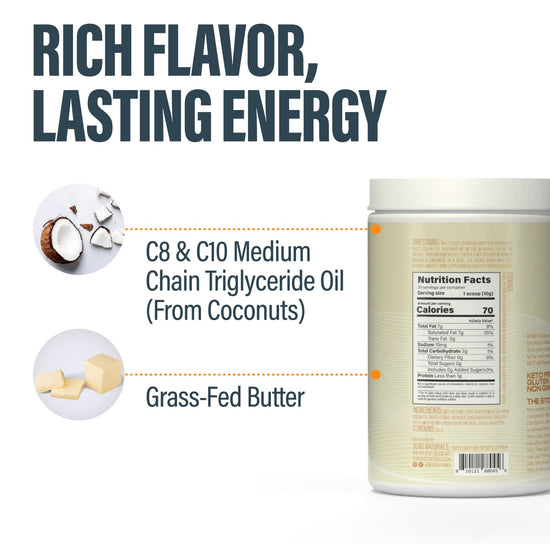Table of Contents
- Introduction
- The Composition of Non-Dairy Creamers
- Calcium Content in Non-Dairy Creamers
- The Role of Fortification in Non-Dairy Products
- Alternative Sources of Calcium Beyond Dairy
- Practical Tips for Incorporating Non-Dairy Creamers into Your Diet
- Conclusion
- FAQ
Have you ever found yourself standing in the grocery aisle, staring at the myriad of non-dairy creamers, wondering which one to choose? If you’re like many of us, you might be particularly concerned about calcium levels, especially if you’re managing dietary restrictions or simply being health-conscious. The question then arises: does non-dairy creamer have calcium?
In recent years, the popularity of non-dairy creamers has surged, thanks to the increasing number of people shifting away from traditional dairy due to lactose intolerance, dietary preferences, or health considerations. However, as we navigate this new landscape of dairy alternatives, understanding their nutritional profiles—especially calcium content—becomes crucial.
In this blog post, we will dive deep into the world of non-dairy creamers, exploring their ingredients, nutritional value, and whether they can effectively replace milk in terms of calcium content. We’ll also discuss the implications for those who are health-conscious or have specific dietary needs. By the end of this article, you’ll have a comprehensive understanding of non-dairy creamers and how they fit into a balanced diet.
Introduction
Non-dairy creamers often promise a creamy texture without the lactose and fat associated with traditional dairy products. For those of us exploring alternatives to cow's milk, these creamers provide a convenient option for coffee, tea, or culinary uses. However, the extent to which these products contribute to our nutritional needs, particularly calcium, is often overlooked.
Calcium is a crucial mineral for bone health and overall bodily function. Many individuals rely on dairy as a primary source of calcium, but for those who avoid dairy, finding alternative sources is essential. This has raised the question: Does non-dairy creamer contain calcium?
Understanding the nutritional landscape of non-dairy creamers is not just about identifying calcium levels; it's about making informed choices that align with our health goals. In this post, we will cover:
- The composition of non-dairy creamers
- Calcium content in various types of non-dairy creamers
- The role of fortification in non-dairy products
- Alternative sources of calcium beyond dairy
- Practical tips for incorporating non-dairy creamers into your diet
Let’s embark on this journey to uncover the truth about non-dairy creamers and their calcium content.
The Composition of Non-Dairy Creamers
Non-dairy creamers are typically made from a blend of ingredients designed to mimic the creamy texture and flavor of milk or cream. Common ingredients include:
- Vegetable oils: These provide the fat content that gives non-dairy creamers their creamy mouthfeel. Common oils include coconut oil, palm oil, and canola oil.
- Corn syrup solids: Often used as a sweetener and thickener, corn syrup solids help create a smooth texture.
- Stabilizers and emulsifiers: Ingredients such as mono- and diglycerides are added to help blend the oils and water, ensuring a consistent texture.
- Flavorings: Many non-dairy creamers are enhanced with artificial or natural flavors to mimic the taste of traditional creamers.
The specific formulation can vary significantly between brands and types of creamers, meaning that nutritional content, including calcium levels, can also differ widely.
Calcium Content in Non-Dairy Creamers
When it comes to calcium, non-dairy creamers often present a mixed bag. Many commercially available creamers are not naturally high in calcium, and the calcium content can greatly depend on whether the product is fortified.
Fortified vs. Unfortified Creamers
-
Unfortified Creamers:
- Most non-dairy creamers made from vegetable oils and corn syrup solids contain minimal, if any, calcium. For example, a typical unfortified coconut or almond non-dairy creamer may have only trace amounts of calcium, far less than dairy milk.
-
Fortified Creamers:
- Many brands recognize the importance of calcium and add it to their products. For instance, some non-dairy creamers are fortified with calcium carbonate or calcium phosphate, providing a significant boost. These fortified options can contain calcium levels comparable to or even exceeding those found in traditional dairy products.
How to Check Calcium Content
To determine the calcium content in a specific non-dairy creamer, it’s essential to read the nutrition label. Look for both the total calcium content per serving and whether the product is fortified. For those managing calcium intake for health reasons, this step is crucial.
The Role of Fortification in Non-Dairy Products
Fortification is the process of adding essential nutrients to foods that may not naturally contain them. This practice has become increasingly common in non-dairy products to help individuals meet their dietary needs without consuming dairy.
Benefits of Fortification
- Enhanced Nutrition: Fortified non-dairy creamers can help individuals who are avoiding dairy still get adequate calcium. This is especially important for individuals at risk for osteoporosis or those following plant-based diets.
- Dietary Flexibility: Fortified options provide flexibility for those with lactose intolerance or dairy allergies, allowing them to enjoy creamy beverages without sacrificing nutritional benefits.
Common Fortification Practices
- Calcium: As mentioned, calcium is often added in the form of calcium carbonate or calcium citrate.
- Vitamin D: Many non-dairy creamers are also fortified with vitamin D to aid calcium absorption, making them a more holistic option for bone health.
Alternative Sources of Calcium Beyond Dairy
For those who are lactose intolerant or prefer to avoid dairy, there are plenty of other sources of calcium. Here are some available options:
- Fortified Plant Milks: Many brands of almond, soy, and oat milk are fortified with calcium and vitamin D, making them excellent alternatives.
- Leafy Greens: Vegetables such as kale, collard greens, and broccoli are rich in calcium.
- Seeds and Nuts: Almonds and chia seeds are good sources of calcium.
- Fish: Canned fish with bones, like salmon and sardines, are high in calcium.
- Legumes: Certain beans and lentils provide a decent amount of calcium as well.
Incorporating a variety of these foods into your diet can help ensure you meet your calcium needs without relying solely on dairy products.
Practical Tips for Incorporating Non-Dairy Creamers into Your Diet
As we explore the world of non-dairy creamers, it’s important to consider how to integrate them into our daily lives effectively. Here are some practical tips:
- Experiment with Different Brands: Given the variety in formulations, trying various brands may help you find one that meets your taste and nutritional preferences.
- Pair with Calcium-Rich Foods: Consider using fortified non-dairy creamers in conjunction with other calcium-rich foods to enhance your overall intake.
- Read Labels Carefully: Always check the nutrition label for calcium content and other nutrients to make informed choices.
- Use in Cooking and Baking: Non-dairy creamers can be used in recipes for creamy soups, sauces, and baked goods, providing flexibility in meal preparation.
Conclusion
Navigating the world of non-dairy creamers can be a challenge, particularly when it comes to understanding their calcium content. While many non-dairy creamers do not naturally contain calcium, fortified options can bridge the gap, offering an alternative for those avoiding dairy.
By reading labels and choosing fortified products, we can enjoy creamy beverages without sacrificing our calcium intake. Additionally, being aware of other dietary sources of calcium allows us to maintain a balanced and nutritious diet.
As you explore the myriad of non-dairy options available, remember that making informed choices is key. Whether you’re looking to enhance your coffee, tea, or culinary creations, non-dairy creamers can be a valuable addition to your kitchen.
FAQ
1. Do all non-dairy creamers contain calcium?
Not all non-dairy creamers contain calcium. It's essential to check the nutrition label to see if the product is fortified with calcium.
2. Which non-dairy creamers are the best sources of calcium?
Fortified non-dairy creamers, such as those made from almond, soy, or oat milk, are often the best sources of calcium. Always look for those labeled as fortified.
3. Can I get enough calcium from non-dairy creamers alone?
While fortified non-dairy creamers can contribute to calcium intake, it's essential to include a variety of calcium-rich foods in your diet to meet daily requirements.
4. Are non-dairy creamers healthy?
Non-dairy creamers can be part of a healthy diet, especially when fortified; however, they should be consumed in moderation, like any processed food.
5. How can I ensure I'm getting enough calcium if I avoid dairy?
To ensure adequate calcium intake without dairy, incorporate fortified plant milks, leafy greens, nuts, seeds, and fish into your diet.
By taking a holistic approach to nutrition, we can enjoy the benefits of non-dairy creamers while meeting our dietary needs. Together, let’s embrace wellness through informed choices.
Written by:

Butter MCT Oil Creamer
BUBS Butter MCT Oil Creamer (formerly Halo Creamer): Scientifically-Backed Brain and Body Fuel
BUBS Butter MCT Oil Creamer is your go-to for clean, fast-acting energy and focus, no crash included. It blends creamy grass-fed butter with fast-acting MCT oil powder (C8 and C10) to kickstart your day and keep you sharp. The MCTs go straight to work, giving your brain a quick boost while the grass-fed butter supports digestion and gut health.
Together, they help curb cravings, keep you feeling full longer, and support steady energy throughout the day—perfect for fueling your mornings or powering through the afternoon slump.
Starts at $37.00
Shop

